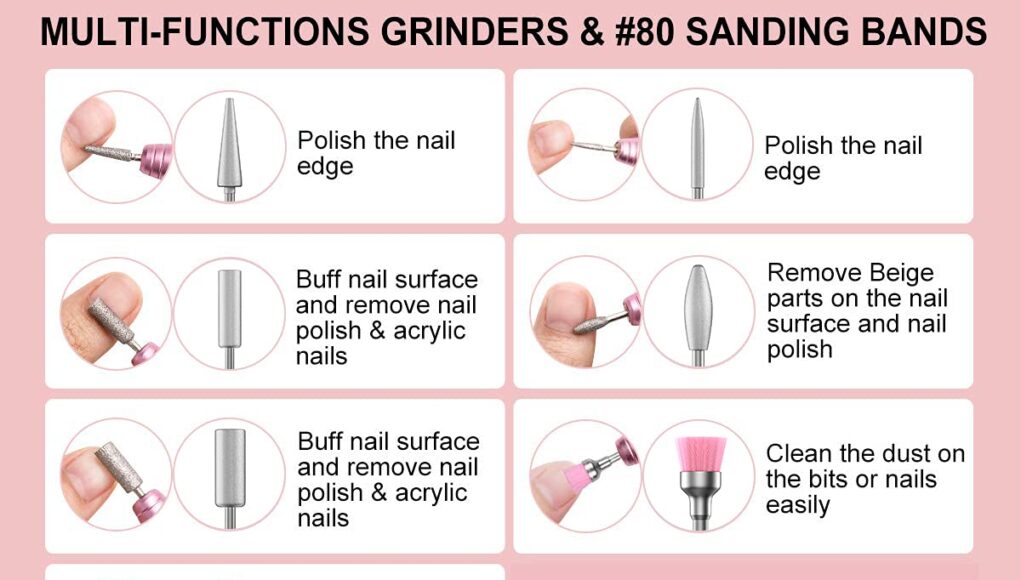Have you been looking into easy ways to clean and file your nails? Electric nail drills might be what you want. These tools work efficiently when you want to file your nails or shape your artificial ones.
However, with such a wide variety of available options, it can be challenging to figure out which ones you need.
If you are confused, this article is what you need.
Different drill bits suit different requirements. Each of these is designed for a specific function, from material to shape.
Read on to learn about the different types of nail drills and which one you should use.
What is an electric nail drill?
Nail drills originated from electric drill bits used to drill holes in rigid materials like wood, plastic, or metals.
- A nail drill has two main adjacent sections: a shank and a head.
- The first nail drills were just cylindrical rods with sanding bands attached to them. They were made for natural nails.
- Nowadays, nail drills have been developed further to incorporate better materials and quality. You can use them to do fill-ins, remove excess acrylic, and keep your nails healthy.
Types of nail drills
There are various kinds of nail drills available nowadays. They have different properties and functions. The following sections tell you about each type so you can find the perfect one for your requirements:
Mandrel and sanding bands
These are the original nail drills. They are best suited for natural nails and perfect if you are new to the tool.
Their sanding bands have different levels of coarseness:
- Fine sanding bands: Used to roughen the surface of natural nails. It helps create a better affinity between them and the acrylics.
- Medium sanding bands: They clean up extra acrylic that may be left around the cuticles.
- Coarse sanding bands: These are tougher nail bits used to trim fill-ins.
Drum or barrel-type metal nail drills
These look similar to the mandrel nail drills but are made of tougher material. They are ideal for using on artificial nails as they are made from abrasive materials like:
- Stainless steel
- Tungsten carbide
- High alloy steel
- Diamond
- Ceramic
Like mandrel nail drills, these also have three levels of coarseness: fine, medium, and coarse. You would want to use them with artificial nails as they are best suited to smooth out lumps and fix cracks.
Conical-shaped or pointy nail drills
These nail bits are slimmer and pointy. They are used when cleaning up extra acrylic or gel deposits from under the nail.
The conical nail drills are:
- Smaller and slimmer so, they can go under the nail and clean it
- Are gentler as they come in contact with the under-skin
How to stay safe while using nail drills?
Nail drills are beneficial but have to be used with proper caution. They are easy to operate if you stick to the instructions.
Some points to keep in mind would include:
- Not turning the speed too high
- Wearing protective gorges while practising
- Reading the working manual thoroughly before starting
If you are new to nail drills, start with the gentler mandrel ones.
In conclusion
Using electric nail drills for maintaining your nails is convenient and efficient. They are handy for nail art and artificial nails. So, get your set of nail drills now!











